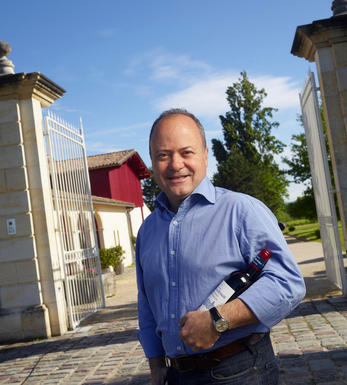
2000 Château Grand Corbin-Despagne, St Emilion, Bordeaux

Critics reviews
Robert M. Parker, Jr. - 23/04/2003
About this WINE

Chateau Grand-Corbin-Despagne
Château Grand-Corbin-Despagne is still family owned and run and today is now run by François Despagne. The Despagne family has lived in or around St-Emilion since 1620 or earlier. The first plots of Grand-Corbin-Despagne were bought in 1812 and there are now 30 hectares of vineyards, which are located just nest to the Pomerol border in the northern part of the appellation.
The wine is typically a blend of Merlot (75%), Cabernet Franc (20%) and Cabernet Sauvignon (5%). The grapes are fermented in a combination of temperature-controlled stainless steel and concrete vats. The wines are then matured in oak barrels (40% new) for 12- 15 months. Described as "a property to watch since the late 90s" by Robert Parker this estate is now producing lush concentrated St Emilions that in these days of vinuous inflation still offer excellent value for money.

St Émilion
St Émilion is one of Bordeaux's largest producing appellations, producing more wine than Listrac, Moulis, St Estèphe, Pauillac, St Julien and Margaux put together. St Emilion has been producing wine for longer than the Médoc but its lack of accessibility to Bordeaux's port and market-restricted exports to mainland Europe meant the region initially did not enjoy the commercial success that funded the great châteaux of the Left Bank.
St Émilion itself is the prettiest of Bordeaux's wine towns, perched on top of the steep limestone slopes upon which many of the region's finest vineyards are situated. However, more than half of the appellation's vineyards lie on the plain between the town and the Dordogne River on sandy, alluvial soils with a sprinkling of gravel.
Further diversity is added by a small, complex gravel bed to the north-east of the region on the border with Pomerol. Atypically for St Émilion, this allows Cabernet Franc and, to a lesser extent, Cabernet Sauvignon to prosper and defines the personality of the great wines such as Ch. Cheval Blanc.
In the early 1990s there was an explosion of experimentation and evolution, leading to the rise of the garagistes, producers of deeply-concentrated wines made in very small quantities and offered at high prices. The appellation is also surrounded by four satellite appellations, Montagne, Lussac, Puisseguin and St. Georges, which enjoy a family similarity but not the complexity of the best wines.
St Émilion was first officially classified in 1954, and is the most meritocratic classification system in Bordeaux, as it is regularly amended. The most recent revision of the classification was in 2012

Cabernet Sauvignon Blend
Cabernet Sauvignon lends itself particularly well in blends with Merlot. This is actually the archetypal Bordeaux blend, though in different proportions in the sub-regions and sometimes topped up with Cabernet Franc, Malbec, and Petit Verdot.
In the Médoc and Graves the percentage of Cabernet Sauvignon in the blend can range from 95% (Mouton-Rothschild) to as low as 40%. It is particularly suited to the dry, warm, free- draining, gravel-rich soils and is responsible for the redolent cassis characteristics as well as the depth of colour, tannic structure and pronounced acidity of Médoc wines. However 100% Cabernet Sauvignon wines can be slightly hollow-tasting in the middle palate and Merlot with its generous, fleshy fruit flavours acts as a perfect foil by filling in this cavity.
In St-Emilion and Pomerol, the blends are Merlot dominated as Cabernet Sauvignon can struggle to ripen there - when it is included, it adds structure and body to the wine. Sassicaia is the most famous Bordeaux blend in Italy and has spawned many imitations, whereby the blend is now firmly established in the New World and particularly in California and Australia.


Buying options
Add to wishlist
Description
This has been a property to watch since the late nineties. All of the recent vintages have represented a relatively virile, muscular, tannic style of St.-Emilion. The black/purple-colored 2000 is a sleeper of the vintage. Revealing aromas of plum, wood smoke, iron, blackberries, licorice, underbrush, and cassis, this full-bodied, layered, powerful, muscular St.-Emilion has some tannin to shed, but its finish reveals considerable persistence. It is a strong, virile, broodingly impressive effort. Anticipated maturity: 2006-2018.
Robert M. Parker, Jr. - 23/04/2003
wine at a glance
Delivery and quality guarantee